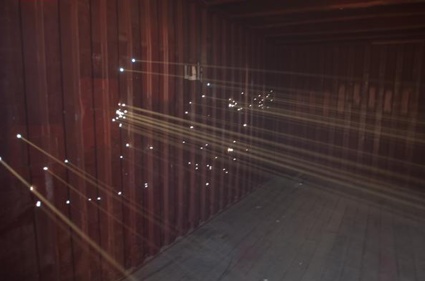 Milica Tomic, Belgrad, 2005. Photo: Milica Tomic
Milica Tomic, Belgrad, 2005. Photo: Milica Tomic
While writing my review of Artissima, the contemporary art fair that closed earlier this month in Turin, i left one project aside. I was so interested by Milica Tomic‘s Container that i decided to take some time to document it more thoroughly.
The work, which was brought to Turin by Charim Galerie (Vienna), challenges the ‘representation’ (or lack of thereof) of past violent events.
Container recreates the Dasht-i-Leili massacre, a war crime committed in Northern Afghanistan in 2001. Thousands of Taliban prisoners were locked inside cargo containers without food nor water and carted off through the desert to prison on a journey that took several days. When they begged for air, the Northern Alliance troops shot at the containers, “to make holes for air to come in.”
Some were killed by the bullets, others died of suffocation. Those who survived were subsequently shot and buried in mass graves. Information about the massacre appeared in the media only two years later. Not a single image illustrated the story. But there were eyewitness reports, and there is a documentary, Afghan Massacre: The Convoy of Death.
Milica Tomic decided to produce the non-existing war image. The images would not only be fake, they would also be made in other locations and contexts. And with every reconstruction, Tomić came across new information linking host countries to various war zones or local episodes of violence.
The scene of the crime was first repeated on an empty cargo container in Belgrade, in a sport club where you can hire a “shooting service”. Three professional shooters shot at the container. They received monetary compensation and did not ask any question. The artist and her team later moved the container to downtown Belgrade, where they photographed it with about 100 people inside.
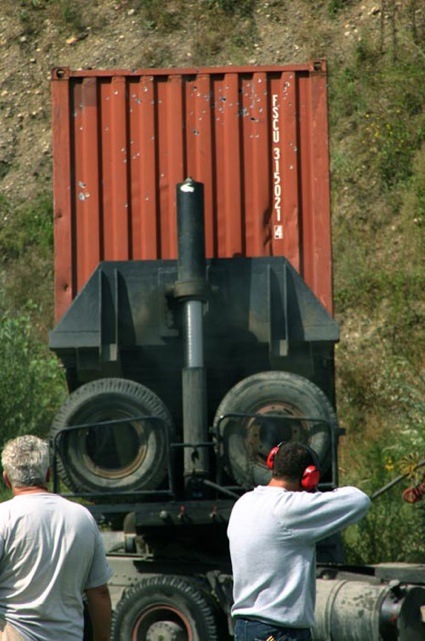 Milica Tomic, Belgrad, 2005. Photo: Milica Tomic. Courtesy Charim Galerie, Vienna
Milica Tomic, Belgrad, 2005. Photo: Milica Tomic. Courtesy Charim Galerie, Vienna
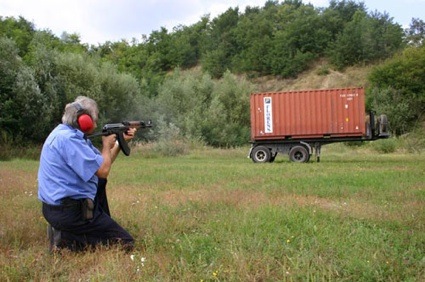 Milica Tomic, Belgrad, 2005. Photo: Milica Tomic. Courtesy Charim Galerie, Vienna
Milica Tomic, Belgrad, 2005. Photo: Milica Tomic. Courtesy Charim Galerie, Vienna
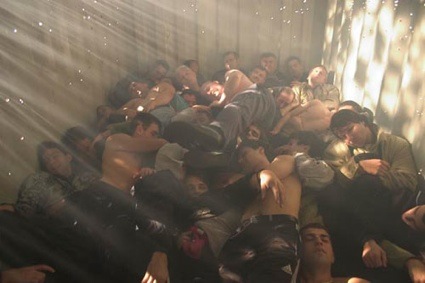 Milica Tomic, Belgrad, 2005. Photo: Milica Tomic
Milica Tomic, Belgrad, 2005. Photo: Milica Tomic
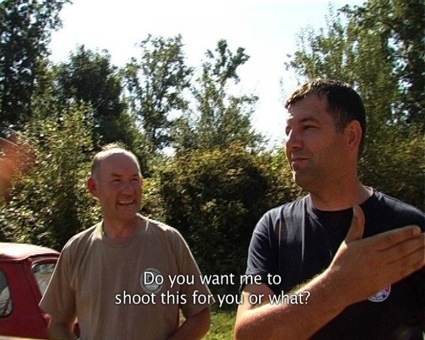 Milica Tomic, Belgrad, 2005. Photo: Milica Tomic
Milica Tomic, Belgrad, 2005. Photo: Milica Tomic
The artist quickly realized that during the crime reconstruction in Belgrade, more crimes started to emerge: those committed during the Yugoslav wars of the 1990s. In order to pierce the thick container metal,, the shooters hired by the artists had to use Kalashnikov and the bullets AK-47/7.62 x 39mm. The bullets were produced in 1988 in Bosnia, and then used during the war in Kosovo until 1999, when the Yugoslav Army brought them to Belgrade, following the retreat from Kosovo.
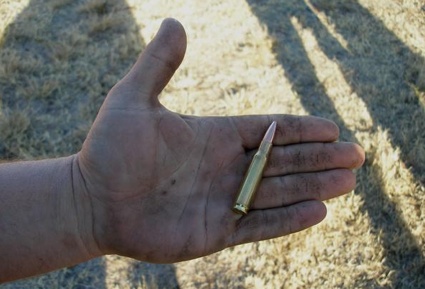 Milica Tomic, Belgrad, 2005. Photo: Milica Tomic
Milica Tomic, Belgrad, 2005. Photo: Milica Tomic
Repeating this reconstruction in different countries produced different scenarios.
In Australia, the (re)construction had to take place only on private property. The only professionals who accepted to shoot at the container were roo-shooters, the kangaroo hunters. This time, the bullet used were the same that were used by the Australian army fighting the US-led war in Iraq.
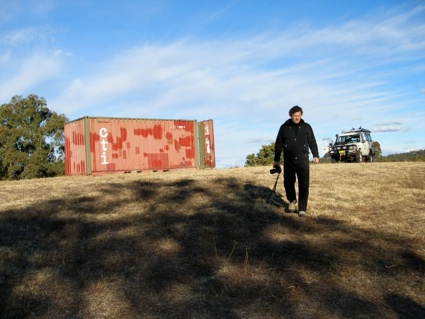 Milica Tomic, Biennale of Sydney, 2006. Photo: Stephen Grant. Courtesy Charim Galerie, Vienna
Milica Tomic, Biennale of Sydney, 2006. Photo: Stephen Grant. Courtesy Charim Galerie, Vienna
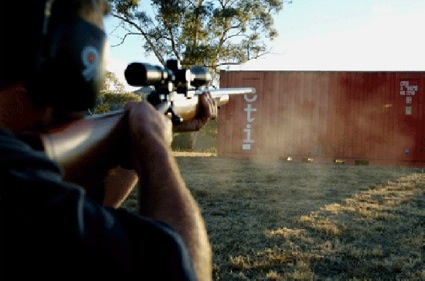 Milica Tomic, Biennale of Sydney, 2006. Photo: Stephen Grant. Courtesy Charim Galerie, Vienna
Milica Tomic, Biennale of Sydney, 2006. Photo: Stephen Grant. Courtesy Charim Galerie, Vienna
Another reconstruction of the crime took place in Gyumri, Armenia, where shooting at a container would have been far too disturbing for the population. Containers were indeed used after 1988 to house many Gyumri residents who had lost their homes to the earthquake. Some are still in use today.
Besides, a total weapon ban had just been imposed in the country because of demonstrations that had ended in bloodshed a couple of months before Tomic’s arrival in Armenia. This time the (re)construction of the war crime didn’t go further than the renting of the container.
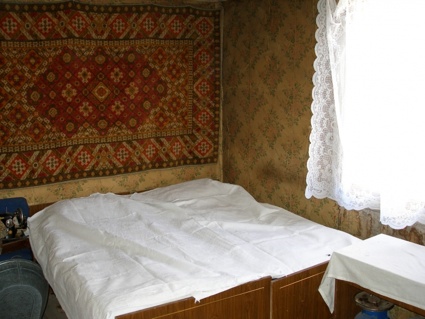
In Great Britain, this artwork was only possible within the BBC studios production. Another option was to take the container out of the country, and return it perforated to Great Britain.
Trauma, recent history and local participation in the system of global network of violence emerge at every step involved in the reconstruction of the crime: from buying a container to hiring professional units to riddle it with bullets, from finding suitable weapon and bullets to identifying the location to shoot.
The networks of military, economic and political relations, which appeared active during the process of reconstruction and begun to tell us its own criminal story.
(…)
By simulating this crime the discussion on global violence, hypocrisy of American wars in the name of democracy and anti-terrorism opens by default.
Previously: As seen at Artissima this month.
